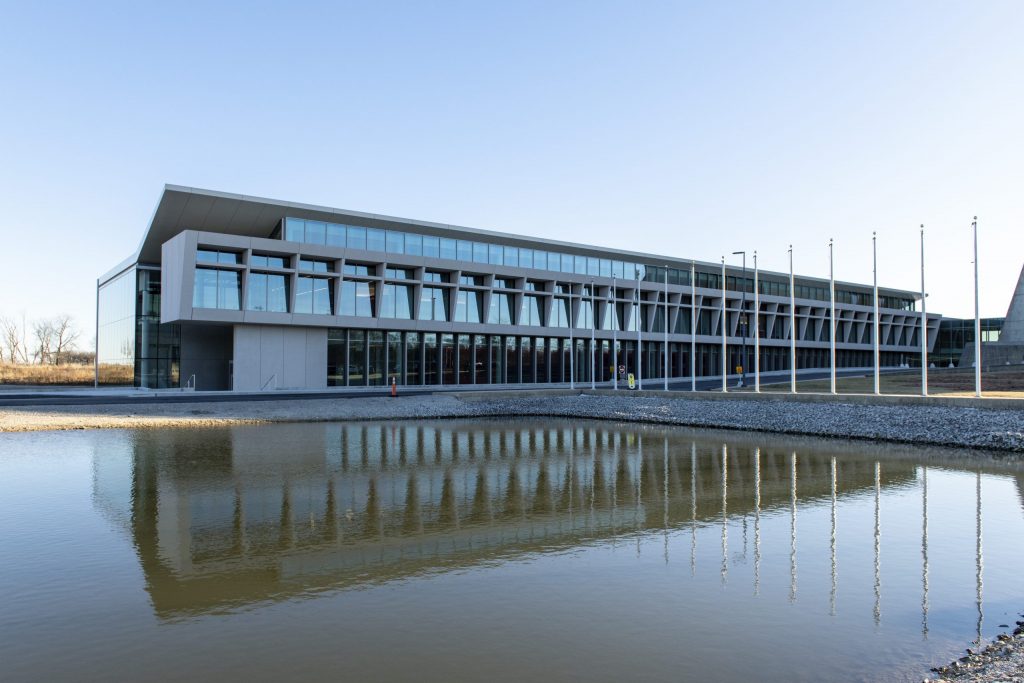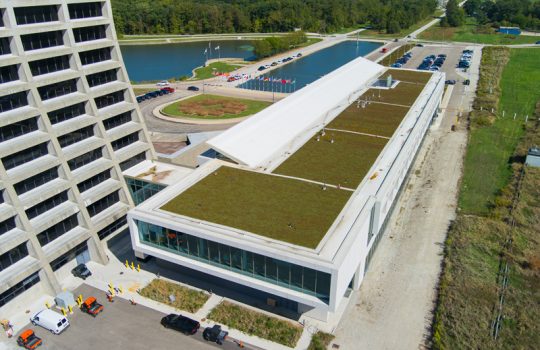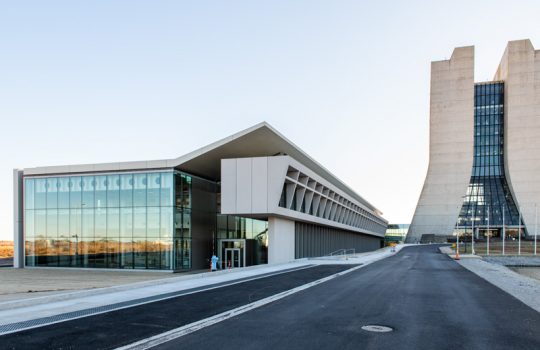In general, using electricity and water, constructing buildings and transporting goods and people all can come at a big environmental cost. Mega particle accelerator experiments, groundbreaking discoveries and the infrastructure at the U.S. Department of Energy’s Fermi National Accelerator Laboratory’s 6,800-acre campus all require significant resources to make the science happen.
Fermilab’s sustainability and campus master plans will help reduce the environmental costs that come from using resources. They also will prioritize the health of the local community, Fermilab’s employees and the environment. These plans support the 2022 Department of Energy Sustainability Plan.
A new sustainability team
Establishing sustainability as a lab priority, Fermilab’s leadership formed a team of four, full-time sustainability specialists to direct the efforts of the lab’s already established Sustainability Management Team — a committee of Fermilab employees with a myriad of job positions who work to make the lab more sustainable.
“The current definition of sustainability would be that you are meeting the needs of the present without compromising the needs of the future. That’s a 50,000-foot definition, but how do you operationalize that?” said John Wills, department head of the Conventional Facilities Engineering Department at Fermilab. “There’s has always been a grassroots movement here to do things more sustainably. Now, senior leadership has taken an active and decisive interest in seeing us become a more sustainable institution.”

Federal sustainable building guiding principles informed the design and construction of Fermilab’s new Integrated Engineering Research Center. Photo: Ryan Postel, Fermilab
The new four-person sustainability team will also provide institutional support to employee-run sustainability groups. These include the Go Green Initiative within the Target Systems Department and others.
“Fermilab is a regional and national leader in ecological restoration and stewardship of our natural environment, which is definitely part of the roots and culture of the organization,” said Catherine Hurley, the recently hired manager of Fermilab’s new sustainability group. “We want to have a world-class science program, and we need a dedicated team to set us on the path for a new phase of sustainability and environmental action at the laboratory.”
In her new role, Hurley will focus on four main areas: fostering Fermilab’s current culture of sustainability; implementing effective sustainability practices used outside the laboratory on campus; driving discovery to achieve sustainability in science; and leveraging partnerships within the lab and the local community.
“The third focus area is really exciting because it is thinking about how we can incorporate efficiency and the reduction of carbon emissions as part of how we do science, which is really a scientific question in and of itself,” said Hurley.
Sustainable practices at the lab
Investigating machine learning algorithms to save electricity for Fermilab’s particle accelerator is one way Fermilab researchers advance science while improving sustainability. Researching and designing smaller particle accelerators, as well as researching and developing superconducting technologies to make those accelerators more efficient, also are ways researchers at Fermilab strive to make high-energy physics projects more sustainable.
“We are already a global leader in high-energy physics and particle accelerator technology, and we also strive to be a global leader in performing science sustainably,” said Lia Merminga, Fermilab’s director. “At Fermilab, we are committed to setting sustainability goals as an integral part of new scientific infrastructure projects and to increasing the energy efficiency over the life cycle of these projects. The new sustainability group will pave the way forward in making our institution a beacon of sustainability and progress.”
Although there are many upcoming projects to improve Fermilab’s energy efficiency, some of Fermilab’s previous sustainability efforts can already be seen on the campus. Architects and engineers designed the newly constructed Integrated Engineering Research Center under a set of guiding principles that will reduce the amount of resources needed to power, heat and cool new buildings. Crews are in the process of retrofitting older buildings with new lighting and HVAC systems to increase their efficiency.
In addition to making buildings more sustainable, other initiatives to improve sustainability have been put into practice on campus. For example, the lab has leased a new fleet of 11 plug-in hybrid mini-vans used on site for eco-friendly travel around campus, and the Energy Star®-awarded Grid Computing Center performs powerful computations efficiently.
“I am so impressed and humbled by how enthusiastic people are, how much grassroots support there is and how much progress Fermilab has already made with a committee of employees working with other assigned duties, which is really impressive,” said Hurley. “My group can provide resources to really accelerate and blossom all of the great boots-on-the-ground work being done at the lab.”
Fermi National Accelerator Laboratory is supported by the Office of Science of the U.S. Department of Energy. The Office of Science is the single largest supporter of basic research in the physical sciences in the United States and is working to address some of the most pressing challenges of our time. For more information, please visit science.energy.gov.



